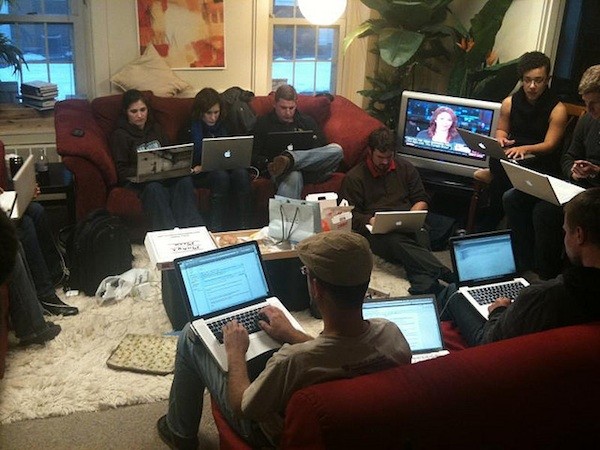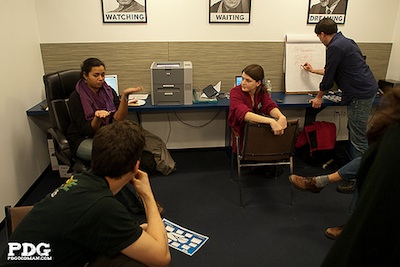Should We Design Social Justice into Learning?

The notion of design is central to the way we think about learning, and to how we think about digital media. Some would argue that learning is "designed in" to digital media such as good video games. But what can this concept tell us about “designing in” social justice to learning experiences?
Thinking about digital media from a design perspective compels us to recognize how much of what we take for granted as “just the way things are” are the consequences of design decisions, and reveals how things could be otherwise.
It shows how individuals can bring their own agendas, perspectives, aims and values to the process of design – and how these values and expectations can become manifest in designed products.
At a basic level, the kind of characters represented in a video game can tell users about who the designers expected to be playing it, welcoming some and potentially excluding others. This critical approach to questioning the way things are designed and represented in digital media resonates with the emphasis in media literacy on empowering people against media through critique. It also reveals the way that designs reflect and are embedded in the particular social and cultural contexts of their makers.
Redesigning Learning and Media
Two exciting projects that I came across at the recent Digital Media and Learning conference took things a step further. They lift the lid of what are often seen as closed and complete designs to let people tinker with the components and produce their own redesigned versions.
Hackasaurus offers “X-Ray Goggles” for the Web that expose the basic building blocks of familiar Web pages and let people directly edit HTML code and immediately see the results.
The Gendered Ad Remixer is a playful tool that allows you to play the visuals from one advertisement alongside the audio track from another, with ads split into those advertising “boys’ toys” and those aimed at girls. The resulting mashups are hilarious (try watching the visuals for Barbie Island Princess with the audio for Battleground) but also show how stereotypical notions of gender are strongly designed in to these toys and ads, and – more importantly – how changing some design decisions can result in very different messages.
These two tools go beyond critiquing media to actually revealing the nuts and bolts of how media has been designed and giving people the chance to redesign it with new meanings. 
The process of redesign is important because, according to the New London Group, it is a process by which we make our own meanings out of available existing designs. From this perspective, no design is ever entirely original, but equally, whenever someone takes an existing design it is likely to be repurposed, adapted, and appropriated and remixed with other available elements in the environment, producing a new and unique meaning. Redesign, then, is something that happens all the time to a greater or lesser extent, but depending on the resources and designs available, it might be a radical redesign or simply a “tweak.”
If we want to radically change the way things are done, then we may need to radically expand the available resources and designs on which people are able to draw.
Everyday Design and Social Justice
Redesign can help us think about how change comes about, and issues of change are central to concerns of social justice.
A “just” society is not a definitive end-goal towards which we can measure our progress (or, indeed, our retreat), but a process in which we acknowledge and recognize injustice wherever it lies and seek to redress it. The concepts of design and redesign embrace both process and product, and so provide a good way for thinking about the process of change necessary in a movement towards social justice.
Acknowledging that we are living in an unjust society prompts us to think about how we can tackle such injustices – and everyday design can be an important part of this. The social design site’s motto is “We cannot not change the world...Every day we could do things differently than we have done it before.” This makes us all designers of our own lives and societies, simply through living our lives and taking action in the world.
Designing With “Users”
Seeing us all as designers breaks down the distinction between the “designer” and the “end-user.”
In the age of “perpetual beta,” constant iteration in the light of user feedback is crucial to the success of digital products. But the description of “users” is potentially problematic here, as it seems to imply people simply passively make use of products designed for them, whereas “users” can and do exercise agency in the process of design, and in its final use. Involving the people who will be hopefully making some kind of meaningful use from the project or product being designed makes it more likely that it will actually meet their needs. And when those people are those who are often marginalized from the mainstream, their needs and context of use may also be different and specific, making the inclusion of their expertise in the design process even more significant.
One of the strengths of a design perspective is a simultaneous focus on the process of design as well as the designed product, and the means as well as the ends can be informed by a social justice perspective. Involving users in the design process is a way of ensuring the means as well as the ends of design is informed by considerations of social justice -- it also will lead to more useful and usable designs. The experience of taking part as a valued member of a design team can itself be a powerful experience for people whose voices are often not listened to. At one extreme, an “auteur” conceives of an idea and takes all the decisions. At the other, design is a collaborative effort in which the expertise and knowledge of the people who will be making use of the final product are valued equally alongside the expertise of professional designers, coders, graphic artists, etc.
This kind of participatory design does not mean that everyone is an expert in everything. What it does mean is that we, as educators, value the particular expertise, needs, desires and opinions of those who are going to be making use of, and making meaning from, our co-created designs for learning.
Banner image credit: digital.democracy http://www.flickr.com/photos/digitaldemocracy/4379912137/
Secondary image credit: PZAO http://www.flickr.com/photos/pdgoodman/4280296900/in/photostream/